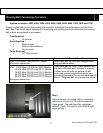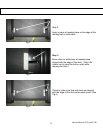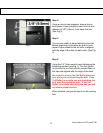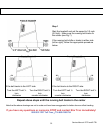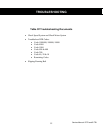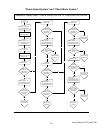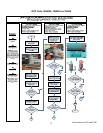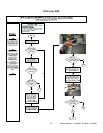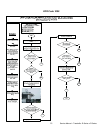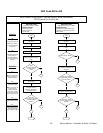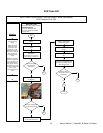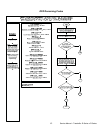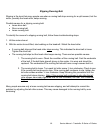
Service Manual – Treadmills: E-Series x P-Series
64
Slipping Running Belt
Slipping is the term that many people use when a running belt stops moving for a split second, but the
motor, possibly the head roller, keeps moving.
Possible causes for a slipping running belt:
x Loose drive belt
x Worn running belt
x Loose running belt
To identify the cause of a slipping running belt, follow these troubleshooting steps:
1. Lift the motor shroud.
2. With the motor shroud lifted, start walking on the treadmill. Watch the head roller.
x If running belt slips and the head roller stops
moving. This indicates the drive belt is loose.
Tighten the drive belt.
x The running belt slips but the head roller keeps moving. There are two possible causes.
1. The running belt is worn. Check the condition of the running belt. Feel the underside
of the belt. If the belt feels glazed/ glossy in the center, it is worn and should be
replaced. The underside of the running belt should have a rough canvas feel to it.
2. The running belt is loose. Turn each tail roller screw ¼ turn clockwise. Check to see
if the running belt continues to slips. If the running belt continues to slip, tighten the
tail roller screws another ¼ turn clockwise. Keep following this procedure until the
running belt stops slipping. Note: If the running belt continues to slip after the tail
roller screws have been tightened one full turn clockwise, call Star Trac Customer
Support for more assistance.
Many people assume only a loose running belt causes slipping, and will attempt to correct the
problem by adjusting the tail roller screws. This may cause damaged to the running belt by over
tensioning.



